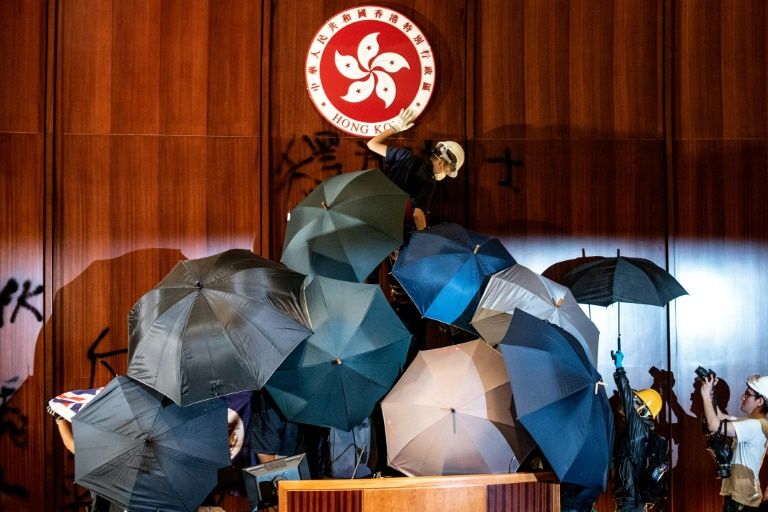 Last summer the World Economic Forum (WEF) invited its 1,500 council members to identify the main issues the world faces, and what should be done about them. The WEF consists of 80 councils covering a wide range of issues including social media. Members come from academia, industry, government, international organisations and wider civil society.
Last summer the World Economic Forum (WEF) invited its 1,500 council members to identify the main issues the world faces, and what should be done about them. The WEF consists of 80 councils covering a wide range of issues including social media. Members come from academia, industry, government, international organisations and wider civil society.
The top three issues highlighted for 2014 concerned rising societal tensions in the Middle East and north Africa; widening income disparities; and persistent structural unemployment. Perhaps surprisingly, in tenth place was a concern over the rapid spread of misinformation online, and specifically social media’s role in this. With a value of 3.35 on a scale of 1-5 this was seen as “somewhat to very significant”.

False information and the news
Within a number of professions – journalism being an obvious one – the spread and potential for reporting misinformation is a genuine concern. Being first to report breaking news has long been a key value for traditional media outlets, though this may no longer hold the appeal it once had. Some news organisations are instead placing higher value on being right even if that means not being first in reporting a story. This is probably a result of various high profile mistakes made recently using social media information.
Near to the anniversary of the 2013 Boston Marathon bombings, it is worth remembering that information posted on Reddit led to the New York Post printing images of two suspects on its front page, who ultimately had nothing to do with the bombings. Also, following the disappearance of Malaysia Airlines flight MH370 in March, NBC news highlighted various false reports spreading on social media which alleged that the plane had made a safe landing.
Time-consuming verification practices make it near impossible for newsrooms to compete with the speed of social media; online verification is increasingly important if this allows the reporting of factually correct online information. Trust in the source of information understandably continues to be one of the most, if not the most, important asset a news organisation has.
Are internet users concerned?

While the WEF data showed the rapid spread of false information as a key trend for 2014, the 2013 Oxford Internet Survey (Pdf) found that trust in the reliability of online information among British internet users has changed very little in the past 10 years. More than that, and this is especially important in relation to false information and the news, users identify the internet as the most reliable source of information over television and radio (with a score of 3.6 on average, where 1 is unreliable and 5 is totally reliable).
The authors note: This stability suggests that users have learnt to what extent they can trust information online. In this light, we can see that people have a learned level of scepticism about information that can be found online, which is contrary to many expectations of people being unduly influenced by misinformation distributed online.
But even if internet users are not terribly concerned about false information, it remains an issue.
How does information spread?
False information spreads just like accurate information. Important work is being developed on the spread and circulation of online information, specifically academic and industry studies on virality. This seeks to better understand the circumstances under which information has or may spread. What is clear is that it is difficult to isolate specific patterns, users or types of content that may result in the spreading of information online.
But some patterns do emerge. In their analysis, Karine Nahon and Jeff Hemsley found that the role of “gatekeepers” is central to whether something goes viral or not. These gatekeepers – people who are well placed within a network to share information with others – are often old-fashioned journalists or people “in the know”. Nahon and Hemsley provide the famous example of Keith Urbahn, chief of staff for former US defense secretary Donald Rumsfeld. His tweet reporting the death of Osama bin Laden went viral before the president had been able to address the news media. A visualisation by Social Flow highlights the importance of both Urbahn and CNN’s Brian Stelter in the spread of this information.
Industry research by Face also shows the importance of gatekeepers, following on from an emotional trigger and validation by the relevant audience.
A further body of work focuses on a specific type of online content that often spreads rapidly: internet memes. Limor Shifman defines an internet meme as:
a) a group of digital items sharing common characteristics of content, form, and/or stance, which b) were created with awareness of each other, and c) were circulated, imitated and/or transformed via the internet by many users.
When it comes to memes, the idea of “false information” takes on a very different meaning compared to how journalists may verify online information.
Take, for example, the incident of a police officer seemingly casually pepper spraying a group of Occupy protesters at a university campus in late 2011. While this incident did take place, it also gave birth to a popular meme. This shows the police officer photoshopped into a series of art works as well as other contemporary and historical settings. So while the original information is accurate, its further treatment turns it into something else.
With the rapid development of platforms like Twitter, these different types of content – and different types of users, including fake and spoof accounts – all exist in the same place and can relate to the same event, which adds complication.
How do we know it’s false?
When it comes to verification, journalism could be seen as a type of frontline service in dealing with false information online. Initiatives such as the Verification Handbook offer important insights and guidelines about how to deal with different types of false information. It essentially encourages readers to assume online information is false until verified.
Understanding the spread of false information online requires a better understanding of two things: first, how information spreads online; second, what we mean by false information.
![]()
In this emergent field of study we need solutions that not only help us to better understand how false information spreads online, but also how to deal with it. This requires different types of expertise: a strong understanding of social media combined with an ability to deal with large volumes of data that foreground the importance of human interpretation of information in context.













